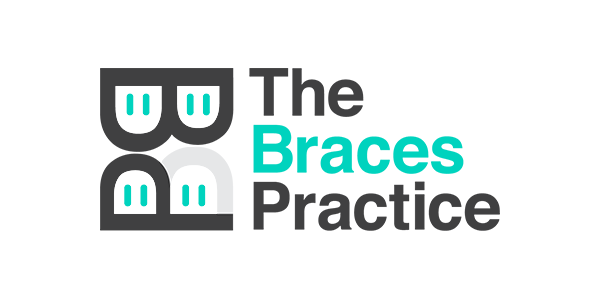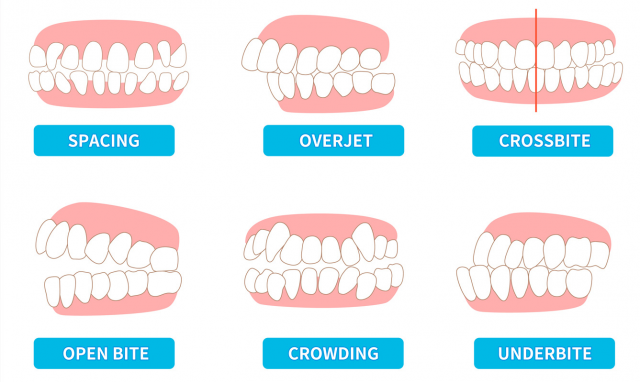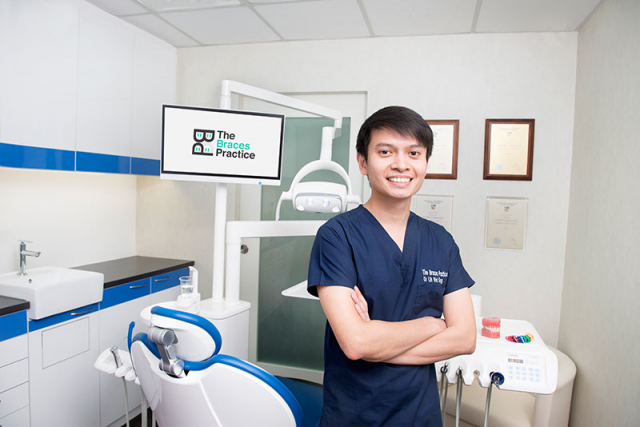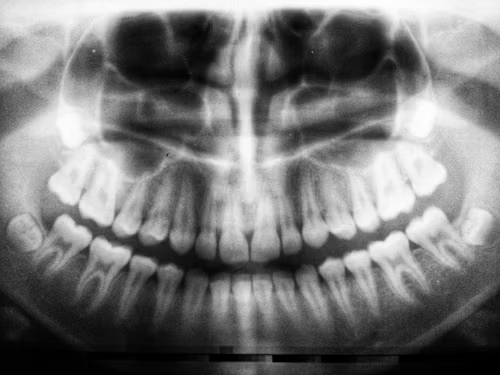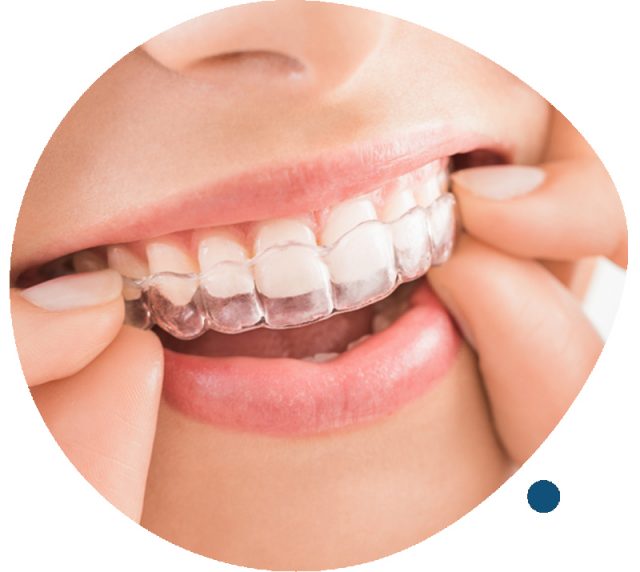Invisalign
What Is Invisalign?
Most adults have 32 teeth and these teeth are positioned in a way that maintains the length, width and shape of the dental arch. The alignment of your teeth affects your facial appearance and affects how you bite, chew and smile. Correcting misaligned teeth requires customised orthodontic treatments. While metal and ceramic braces are the most common options, there are alternatives like Invisalign and various orthodontic clear aligners that may be better suited to your needs.
Invisalign dental braces are different from traditional orthodontic braces, which are noticeable and attached to the teeth surface for the duration of the treatment. Using a series of clear, removable aligner to gradually move your teeth into place, these clear aligner braces help to improve your smile in professional and social settings. Invisible and comfortable, they are fast becoming widely popular, as demand for greater flexibility with braces rise.
What Can Invisalign Treat?
Invisalign clear aligners can help treat and remedy dental issues, ranging from minor teeth misalignment to moderate and severe cases of crooked teeth.
Overbite/Overjet
An overbite or overjet occurs when your upper front teeth cover a significant portion of your lower front teeth, potentially leading to trauma to the upper gums from the lower front teeth.
Crowded Teeth
Crowded teeth occur when there isn’t enough space in the jaw for teeth to fit properly. This can cause your teeth to bunch up, overlap, and twist, sometimes being pushed to the front or the back.
Spacing
Spacing occurs when there are excessive gaps between two or more teeth. This not only affects the appearance negatively but can also lead to food getting trapped easily during eating, potentially causing tooth decay and gum problems.
Underbite
An underbite occurs when the lower teeth and jaw extend beyond the upper teeth. In severe cases, it can lead to difficulties with biting, chewing food, or speaking.
Crossbite
A crossbite is a dental condition where the upper teeth fit inside the lower teeth when the jaw is closed. This can happen with the front teeth (anterior crossbite) or with the back teeth (posterior crossbite). It can lead to various dental issues if not corrected, such as uneven wear on the teeth, jaw pain, and difficulty chewing.
Open Bite
An open bite is when the upper and lower teeth do not make contact or fully close when the mouth is closed. This condition can affect appearance and may lead to speech difficulties for patients.
How Much Does Invisalign Cost In Singapore?
In Singapore, the cost of Invisalign treatment can vary depending on whether it’s provided by a general dentist or an orthodontist. Generally, the price ranges from S$4,500 to S$8,000+ when administered by general dentists and from S$7,000 to S$10,000+ when provided by orthodontists.
It’s important to clarify with your dentist whether the quoted price includes refinement aligners to achieve optimal results. Ultimately, the total cost of Invisalign treatment depends on individual needs, requirements, and the complexity of each case.
Invisalign Cost at Braces Practice
At The Braces Practice, our Invisalign prices are S$6,650 (Student price before GST) and S$7,050 (Adult price before GST). These prices include expenses such as pre-treatment assessments, mid-treatment procedures (up to 2 refinement aligners), and post-treatment costs such as dental x-rays, treatment planning, and retainers.
Invisalign Plans Available in Singapore
In Singapore, there are four Invisalign plans available to address different levels of complexity in dental cases. Our orthodontist will select the most suitable plan based on your individual needs. On average, each Invisalign aligner can move teeth by up to 0.25mm. For more complex cases requiring greater tooth movement, more aligners may be necessary to achieve the desired results. In such instances, your dentist will likely recommend either the Comprehensive or Moderate package.
Invisalign Express
Invisalign Express is designed to address minor dental issues efficiently. These aligners are suitable for patients with minor misalignments or slight crowding, providing noticeable improvements within a six-month treatment period, typically utilizing six to seven aligners. Additionally, Invisalign Express is beneficial for individuals who have previously undergone orthodontic treatment with braces but are now experiencing minor alignment issues.
Invisalign Lite
Invisalign Lite is tailored for individuals with mild crowding or spacing issues. Like Invisalign Express, this option offers significant improvements over a comparable timeframe, albeit at a slightly slower pace. Typically, patients undergoing Invisalign Lite treatment receive approximately 14 sets of aligners, with the process lasting a minimum of 8 to 10 months.
Invisalign Moderate
Invisalign Moderate is recommended for moderate to mildly complex crowding. This option involves a minimum of 26 aligners and requires treatment for at least a year to achieve desired results.
Invisalign Comprehensive
Invisalign Comprehensive is designed to address severe crowding concerns. This option involves a longer treatment duration and is specifically tailored to tackle severely crowded teeth. Our orthodontist will evaluate your condition and prescribe the necessary number of aligners to achieve the desired correction, with treatment continuing until optimal results are attained.
Cost Subsidies for Invisalign
Unfortunately, in Singapore, dental braces and orthodontic treatments are generally considered elective or cosmetic procedures and are typically not covered under government healthcare subsidy schemes.
MediSave
MediSave can only be claimed for procedures that necessitate dental surgery and are performed for medical reasons, such as placing dental implants and surgical wisdom tooth extractions. Non-surgical dental treatments such as braces are not eligible for MediSave claims.
CHAS
The Community Health Assist Scheme (CHAS) offers subsidies for selected basic dental services to eligible Singaporeans. These subsidies commonly cover basic dental procedures like examinations, fillings, and extractions. However, orthodontic treatments, such as those involving braces, are typically not covered under this scheme.
Insurance Coverage
Some private health insurance plans in Singapore may provide coverage or partial support for orthodontic treatments, including dental braces. It’s advisable to contact your insurance provider to better understand the specifics of your coverage.
Advantages Of Choosing Invisalign
- With the latest cutting-edge technology, Invisalign is comfortable to wear, fits easily, and sits unobtrusively in your mouth. In fact, some patients hardly even notice that they are wearing them!
- Invisalign provides a discreet and aesthetically pleasing choice for the working professional or even students looking for a more invisible option. Made of clear plastic, Invisalign is almost invisible and light. They are almost undetectable which means that no one will know you are wearing them.
- Unlike traditional braces, Invisalign allows you to remove them whenever you need. For example, removing it to eat, to brush or floss, to do sports or for presentations.
- Gone are the restrictions to diet that come with wearing traditional braces. As you will be able to remove your aligners when you eat, you will still be able to enjoy the foods you love, while staying on track to achieving an amazing smile.
Process for Invisalign
Your experience with us begins with a thorough examination and orthodontic records (X-Rays, photographs, study models) will be taken by our dentists. This allows us to learn more about your dental needs and goals and also to aid in formulating a customized treatment plan for you. A comprehensive treatment plan will then be explained to you. After the initial consultation, we will schedule an appointment for a 3-dimensional scan of your teeth with our latest digital iTERO scanner. This gives a clearer, more precise visualization of your teeth for Invisalign to fabricate your aligners.
Once this scan is done, a simulation of your teeth movement from start to end will be developed and presented to you. During this time, the dentist will discuss the final plan with you and proceed to approve the plan. Your aligners will be ready within 3 to 4 weeks and you will start your Invisalign journey!
The Braces Practice
At The Braces Practice Singapore, we believe that all smiles are beautiful, and we are here to help you achieve the smile of your dreams.
The Braces Practice is a leading provider of orthodontic services and products to the discerning Singaporean community and we aim to be the first choice for those seeking an aesthetic approach to orthodontics. Whether you are looking for Invisalign or other forms of braces, our experienced team is committed to providing the most effective solutions for your dental needs.
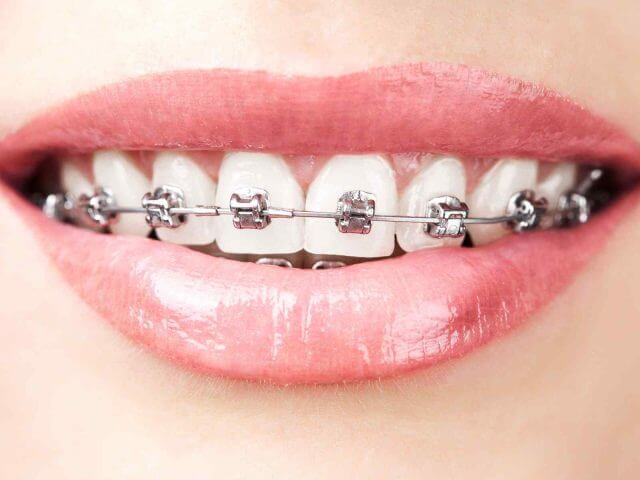
Types of Braces Treatment
Get In Touch With Us
Book An Appointment
To schedule a visit with us, simply drop us a Whatsapp message and we will confirm your appointment.
Frequently Asked Questions (FAQs) About Invisalign In Singapore
The main purpose of Invisalign is to straighten misaligned teeth and correct other dental issues. Invisalign treatment involves wearing clear, removable aligners to gradually straighten your teeth. The invisible teeth aligners do not require brackets, wires or any other restrictions that typically come with metal braces. Invisalign treatment involves a series of plastic aligners that work to gently and gradually move teeth into their optimal position.
The cost of Invisalign clear braces in Singapore varies depending on the clinic you choose to get your treatment from. The Braces Practice places importance on transparent and reasonable pricing. We offer Invisalign treatment options with a price range starting from S$5,550, with student rates available. Contact us for more details and eligibility information.
Invisalign clear braces are best suited to people with alignment issues such as crowded or gapped teeth. Invisalign is also suitable for both teens and adults. Considering that the teeth aligners are transparent, they might also be suitable for individuals who are self-conscious about wearing traditional metal braces. If you have severe teeth alignment issues, it is advisable to head down to a full-service clinic to determine if you are a good candidate for Invisalign treatment.
Doctors recommend that anyone who has completed orthodontic treatment, whether with clear dental braces or metal braces, use a retainer to prevent their teeth from progressively shifting back to their original position. Retainers help hold your teeth in place while the jawbone that might have disappeared during your Invisalign treatment grows back. It is advisable to ask your doctor first if you need to wear retainers after your treatment.
When opting for invisible teeth aligners in Singapore, your orthodontist will create a personalised plan and series of aligners you will have to wear throughout your treatment. Patients typically change to a new set of aligners every 1 to 2 weeks. It is highly recommended by dentists to wear your invisible teeth aligners for at least 20 – 22 hours a day.
It is recommended to take your Invisalign out and clean both your teeth and your aligners thoroughly. It is crucial to start the day by cleaning your teeth and aligners, as bacteria could have built up on your clear aligner braces while you were sleeping. The best way to clean your aligners is by rinsing and brushing them in lukewarm water using the Invisalign Cleaning Crystals or any special cleaning tablets.
Definitely, especially if you are looking for a more discreet orthodontic treatment option. Invisalign clear aligners can effectively address various dental issues like crowding, spacing, and jaw misalignment. However, it is essential to note that while clear aligners are an excellent choice for many, they may not be suitable for more complex orthodontic problems.
Invisalign and braces are both orthodontic treatments aimed at aligning teeth for a straighter smile. While they share similarities, there are key differences between the two systems.
Explore our detailed article comparing Invisalign and braces treatments to learn about the advantages and disadvantages of each option.
The frequency of changing your aligners typically varies according to your dentist’s instructions. Typically, during the initial stages, you’ll you will switch to a new set every 10-14 days based on their instructions.
Traditional braces are usually preferred when:
-
- Tooth extraction is necessary to create space for repositioning teeth.
- Patient compliance might be an issue, as Invisalign’s effectiveness relies heavily on the user’s conscientiousness. Forgetting to wear Invisalign after meals or prolonged periods without wearing it can significantly reduce its effectiveness compared to traditional braces. Hence, we recommend traditional braces, especially for younger patients.
Additionally, Invisalign tends to be more expensive than traditional braces. While Invisalign requires a dental visit every 6 to 8 weeks, traditional braces require visits every 4 to 6 weeks.
Invisalign is an excellent solution for treating misalignment and is generally less painful than traditional braces. While you may feel some discomfort or pressure when transitioning to a new set of aligners, it is typically temporary.
Fortunately, there are no food restrictions with Invisalign since the aligners are removable, which is one of their major advantages. You can eat and drink as you normally would. However, it is crucial to keep them clean to prevent oral issues. Before putting your aligners back in your mouth, make sure to clean them and your mouth thoroughly. Additionally, it is important to avoid eating while wearing your aligners, as they can break or become damaged, resulting in additional costs.
In order to clean your Invisalign aligners effectively, use a soft-bristled toothbrush and mild soap or Invisalign cleaning crystals every day. It is important to avoid using hot water or abrasive cleaners, as they may damage the aligners.
Yes, you can remove your Invisalign clear aligners. In fact, they are designed to be easily removable for eating, drinking, brushing, and flossing. However, it is important to wear them for the recommended 20 to 22 hours per day to ensure the best results.

Drop Us A Message


Other Types of Braces



